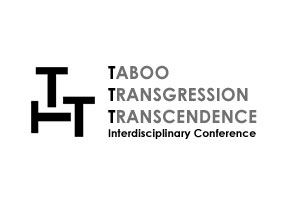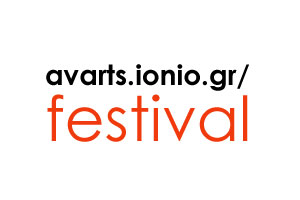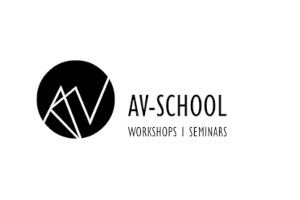This paper explores the intersections of theology, technology and aesthetics through the symbolic and material role of light in Eastern Orthodox Christianity and contemporary digital culture. From the biblical phrase “Let there be light” to the technological reproduction of light via pixels, photonics, and optical fibers, the study proposes that light can be understood not only as a natural phenomenon or a technological tool, but also as a medium of spiritual seeking and cultural imagination.
The central research question is: Can contemporary light-based technologies—such as immersive virtual reality, augmented reality, and digital imaging—function as mediums of mystical experience, in continuity with the theological understanding of Divine Light in the Orthodox Christian tradition?
The study applies an interdisciplinary methodology that combines patristic theology, media theory, and performative artistic practice. A core axis of this methodology is the formation of a community of experimentation, coexistence, and research, as developed by LOOX – Institute for Research, Innovation, and Culture. Our organization creates environments of experiential encounter and artistic creation, where theology meets art and new technologies within an ecosystem of spiritual exploration and creative participation.
The methodology begins with the creation of a community of artists, researchers, academics, and seekers who co-exist in spaces of spiritual, cultural, or historical significance. In these contexts, workshops, seminars, artistic installations, collaborative visual creation, and multisensory performances take place. In these actions, light and image are not used merely as technical elements but as theological and existential tools. Light, therefore, is not only represented, but lived and performed as a mystical and communal experience.
Theoretically, the study is grounded in patristic theology, where light, according to John of Damascus, Symeon the New Theologian, and Gregory Palamas, is experienced as uncreated divine energy rather than an abstract symbol. The Uncreated Light expresses the human capacity to participate in God’s grace and forms a distinct aesthetic and existential stance that transcends doctrinal boundaries and informs lived experience. This theological approach to light highlights its dual nature—both material and spiritual, visible and ineffable. Connecting this perspective with contemporary media theory, the study explores how light—as a medium, through thinkers like McLuhan and Debray—can function not only as a technical element, but as a bearer of revelation and spiritual meaning in the digital age.
This work offers an innovative approach to the study of new media by connecting technological experience with spiritual tradition. Rather than treating the digital environment as desacralized, it suggests that light technology may serve as a contemporary vessel of mystagogy and a means of revealing the sacred.
For media studies, the paper introduces a theological hermeneutical dimension, opening new pathways in the theory of digital imagery, AR/VR technologies, and immersive aesthetics. For theological and religious studies, it brings the relationship between theology, image, and technology to the forefront—not as a contradiction, but as a dynamic coexistence. Finally, it proposes a new model of spirituality in the digital age, in which the user is not a passive viewer but a participant in an active community. Through art, collaboration, and technology, the modern human is invited to discover the presence of light not only behind the screen, but within.
In conclusion, this study suggests that theology and new media are not incompatible realms, but partners in a shared search for truth. Light—as a primordial element of creation, a medium of revelation, and a material of digital expression—becomes a bridge between tradition and contemporary culture, between mystagogy and technology.
The lingering question is: Will we remain passive observers of light, or will we allow it to dwell within us? Will we become bearers of light or merely consumers of images?
We invite you to explore two summer 2025 initiatives by LOOX that merge spirituality and innovation:
•Iconography 2.0 – NextGenerationCulturalTradition: A cultural initiative of experiential education and artistic creation, combining the tradition of Byzantine iconography with new media. Presented within the framework of the Greek Ministry of Culture’s program “All of Greece, One Culture.”
•RECultural: Asterousia International Festival: An international gathering of creators in the Asterousia Mountains aiming to redefine art and cultural identity through contact with the tangible and intangible heritage of the region, under the “Creative Greece” program of the Ministry of Culture.
Loukas Ziaras is a new media artist and researcher working at the intersection of visual culture, theology, and digital technologies. He holds degrees in Audiovisual Arts & Digital Media (BA, MA) from the Ionian University and in Social Theology and Religious Studies from the National and Kapodistrian University of Athens (BA), with further studies in cultural communication and lighting design.
His research explores the primordial human need to shape materials into images that convey meaning—visible and invisible—across time and space. He focuses on the evolution of image-making tools and technologies, emphasizing the role of light and materiality in the transmission of knowledge and spiritual experience. His interests include innovation within tradition, Mediterranean visual cultures, the impact of virtual and augmented reality on perception, and theological questions such as the Trinity, imagination, symbolism, and the metaphysics of presence.
Ziaras combines artistic practice with academic research, experimenting with the integration of culture, artistic creation, and new media. He has produced and exhibited digital artworks at theaters and festivals, and has worked on large-scale productions involving 3D mapping and augmented reality for cultural and corporate events.
He is co-founder of LOOX, an organization for research, innovation, and cultural education. Through LOOX, he develops participatory environments that connect theology, art, and immersive technologies, promoting creative dialogue and spiritual exploration within contemporary digital culture.
Back





